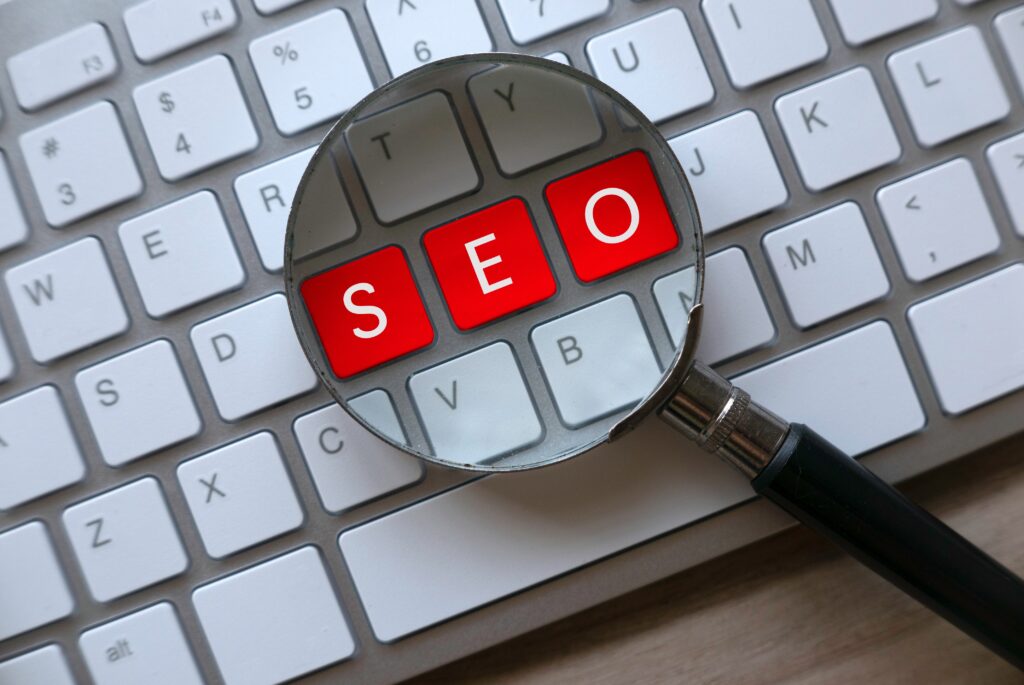If you’re looking to improve your website’s search engine rankings, then you need to have a solid understanding of on-page SEO techniques. On-page SEO refers to the optimization of individual web pages in order to rank higher and earn more relevant traffic in search engines. This involves a variety of techniques that are focused on optimizing the content and structure of your website.
One of the most important aspects of on-page SEO is keyword research. This involves identifying the keywords and phrases that your target audience is searching for and then optimizing your website’s content to include those keywords. By doing this, you can improve your website’s relevance and visibility in search results, which can lead to more traffic and higher rankings.
Another important on-page SEO technique is optimizing your website’s meta tags. Meta tags are snippets of code that provide information about your website to search engines. By optimizing your meta tags with relevant keywords and descriptions, you can improve your website’s visibility in search results and increase your click-through rates. Overall, mastering the basics of on-page SEO techniques is essential for any website owner looking to improve their search engine rankings and drive more traffic to their site.

Understanding SEO
What is SEO?
SEO stands for Search Engine Optimization, which is the process of optimizing your website to rank higher in search engine results pages (SERPs). In other words, it’s the practice of improving the quality and quantity of traffic to your website from search engines like Google, Bing, and Yahoo.
SEO involves a variety of techniques, including on-page optimization, off-page optimization, and technical SEO. On-page optimization focuses on optimizing the content and structure of your website, while off-page optimization involves building backlinks and other external factors that influence your website’s ranking. Technical SEO involves optimizing your website’s technical infrastructure to improve its performance and user experience.
Basics of On-Page SEO Techniques – Importance of SEO
SEO is important for several reasons. First, it helps your website rank higher in search engine results pages, which can drive more traffic to your website. Second, it helps you reach your target audience by optimizing your website for specific keywords and phrases that your potential customers are searching for. Finally, it helps you build credibility and authority in your industry by demonstrating your expertise and knowledge to search engines and users.
In today’s digital age, having a strong online presence is crucial for businesses of all sizes. By investing in SEO, you can improve your website’s visibility, attract more traffic, and ultimately, increase your revenue and profits.
Keyword Research
When it comes to on-page SEO, identifying the right keywords is crucial. Keyword research involves identifying the words and phrases that your target audience is using to search for your product or service. This helps you to optimize your content and website for those keywords, making it easier for search engines to understand what your page is about and rank it accordingly.
Identifying Keywords
To identify relevant keywords, start by brainstorming a list of words and phrases that are relevant to your business or industry. You can also use keyword research tools such as Google Keyword Planner, SEMrush, or Ahrefs to find potential keywords and their search volume.
It’s important to consider the intent behind the keywords you choose. Are people searching for information, products, or services? Understanding the intent behind the search query can help you to create content that meets the needs of your target audience.
Keyword Placement
Once you’ve identified your target keywords, it’s important to place them strategically on your website. Here are some key places to include your keywords:
- Page title: Include your target keyword in the title of your page.
- URL: Use your target keyword in the URL of your page.
- Meta description: Write a compelling meta description that includes your target keyword.
- Headings and subheadings: Use your target keyword in the headings and subheadings of your content.
- Body text: Include your target keyword naturally throughout the body of your content.
Remember, it’s important to use your keywords in a natural and organic way. Don’t stuff your content with keywords or use them in a way that doesn’t make sense. Focus on creating high-quality content that meets the needs of your target audience, and use your keywords strategically to help search engines understand what your page is about.

Meta Tags
Meta tags are HTML tags that provide information about a web page to search engines and website visitors. They are not visible on the page itself but are included in the HTML code. Two important types of meta tags are title tags and meta descriptions.
Title Tags
Title tags are one of the most important on-page SEO elements. They are displayed as the clickable headline in search engine results pages (SERPs). Title tags should be concise, descriptive, and include the targeted keyword for the page. The optimal length for title tags is between 50-60 characters.
To optimize your title tags, make sure they accurately describe the content of the page and include your primary keyword. Avoid keyword stuffing and writing titles that are too long or too short.
Meta Descriptions
Meta descriptions provide a brief summary of the content on a web page. They are displayed below the title tag in SERPs. While meta descriptions do not directly impact search engine rankings, they can influence click-through rates.
To optimize your meta descriptions, make sure they accurately describe the content of the page and include your primary keyword. Keep them between 150-160 characters to ensure they are fully displayed in SERPs. Use action-oriented language and a clear call-to-action to encourage clicks.
That’s it for Meta Tags! Remember to optimize your title tags and meta descriptions to improve your on-page SEO.
Content Optimization
When it comes to on-page SEO, optimizing your content is crucial. The content on your website should be high-quality, engaging, and relevant to your target audience. Here are some tips for optimizing your content:
Quality of Content
One of the most important factors in content optimization is the quality of your content. Your content should be well-written, informative, and engaging. It should provide value to your readers and answer their questions. Make sure your content is original and not copied from other sources.
Keyword Density
Keyword density refers to the number of times a keyword appears in your content. While it’s important to include keywords in your content, you don’t want to overdo it. Keyword stuffing can lead to penalties from search engines. Aim for a keyword density of around 1-2% and make sure your keywords are relevant to your content.
Use of Multimedia
Adding multimedia to your content can make it more engaging and increase the time users spend on your website. This includes images, videos, and infographics. Make sure your multimedia is relevant to your content and optimized for search engines. Use alt tags to describe your images and include transcripts for your videos.
Overall, optimizing your content is an important part of on-page SEO. By following these tips, you can create high-quality content that engages your audience and improves your search engine rankings.
URL Structure
The URL structure of a webpage is an important on-page SEO factor that can impact the visibility of your website on search engine results pages (SERPs). A well-structured URL not only helps search engines understand the content of your webpage but also makes it easy for users to navigate your website.
Here are some tips for creating a search engine-friendly URL structure:
- Keep it simple and descriptive: Use short, simple, and descriptive URLs that accurately reflect the content of your webpage. Avoid using long and complicated URLs that are difficult to read and understand.
- Include keywords: Incorporate relevant keywords in your URL to help search engines understand the topic of your webpage. However, avoid stuffing your URL with too many keywords as it can lead to over-optimization and penalization from search engines.
- Use hyphens to separate words: Use hyphens (-) to separate words in your URL as it makes it easier for search engines to read and understand the content. Avoid using underscores (_) or spaces as they can create confusion and lead to errors.
- Avoid using dynamic parameters: Avoid using dynamic parameters such as question marks (?) and equal signs (=) in your URL as they can make it difficult for search engines to crawl and index your webpage.
- Make it readable and user-friendly: Create URLs that are easy to read and understand for users. Use lowercase letters and avoid using special characters, symbols, and punctuation marks.
By following these tips, you can create a well-structured URL that can improve the visibility and usability of your website.
Internal Linking
Internal linking is a crucial aspect of on-page SEO. It refers to the process of linking one page of your website to another page on the same website. This can help search engines understand the structure of your website and the relationship between different pages.
When it comes to internal linking, there are a few things you should keep in mind. First, make sure that your links are relevant and useful to the reader. Don’t just link for the sake of linking – make sure that the linked page provides additional value to the reader.
Second, use descriptive anchor text for your links. Anchor text is the visible, clickable text in a hyperlink. Descriptive anchor text can help both search engines and readers understand the content of the linked page.
Third, consider the structure of your internal links. Ideally, your website should have a clear hierarchy, with important pages linked to from the homepage and other high-level pages. This can help search engines understand which pages are most important and relevant to your website.
Finally, make sure that your internal links are easy to navigate. Use clear, descriptive labels for your links, and consider using a site map or other navigation tools to make it easy for readers to find what they’re looking for.
By following these basic principles of internal linking, you can help improve the SEO of your website and provide a better experience for your readers.
Mobile Responsiveness
Mobile responsiveness is a crucial aspect of on-page SEO techniques. As more people access the internet through their smartphones and tablets, it’s essential to ensure that your website is mobile-friendly.
When a website is mobile-responsive, it means that it can adapt to different screen sizes and resolutions. This makes it easy for users to navigate and read the content on your site, regardless of the device they are using.
Having a mobile-responsive website can also improve your search engine rankings. Google has stated that mobile-friendliness is a ranking factor, meaning that websites that are mobile-friendly are more likely to appear at the top of the search engine results page (SERP) for relevant queries.
To ensure that your website is mobile-responsive, you can use a responsive design framework or a mobile-first design approach. You can also use tools like Google’s Mobile-Friendly Test to check if your site is mobile-friendly.
In addition to being mobile-responsive, it’s also essential to optimize your website for mobile users. This includes using larger font sizes, optimizing images for faster loading times, and making sure that buttons and links are easy to tap with a finger.
By prioritizing mobile responsiveness and optimization, you can improve the user experience for your mobile visitors and boost your search engine rankings.
Page Speed
Page speed is a crucial factor in on-page SEO techniques. It refers to the time it takes for a web page to load completely. If your page takes too long to load, visitors are likely to leave and look for another website. Moreover, search engines like Google also consider page speed as a ranking factor. A fast-loading page will rank higher in search results than a slow-loading one.
There are several ways to improve the page speed of your website. Here are some effective techniques:
- Optimize images: Large images can slow down your website. Compress your images to reduce their file size without compromising their quality.
- Minimize HTTP requests: The more HTTP requests your website makes, the slower it will load. Minimize the number of requests by combining CSS and JavaScript files, using CSS sprites, and reducing the use of third-party plugins.
- Enable browser caching: Browser caching allows your website to store data on a user’s computer, so the next time they visit your site, it loads faster. This is especially useful for returning visitors.
- Use a content delivery network (CDN): A CDN can distribute your website’s content across multiple servers around the world, reducing the distance between the server and the user. This can significantly improve page load times for users who are far away from your server.
By implementing these techniques, you can improve the page speed of your website and provide a better user experience for your visitors.
User Experience
User experience (UX) is a crucial factor in on-page SEO. The way your website looks and feels to users can have a significant impact on how they interact with it and whether they stay on your site or leave. Here are some tips to improve your website’s UX for better SEO:
- Make your website easy to navigate – Ensure that your website has a clear and simple navigation structure that makes it easy for users to find what they are looking for.
- Use clear and concise language – Make sure that your website’s content is easy to read and understand. Use simple language and avoid jargon or technical terms that your audience may not be familiar with.
- Optimize your website for mobile devices – More and more people are using their mobile devices to browse the web. Ensure that your website is optimized for mobile devices, which includes having a responsive design and fast loading times.
- Provide high-quality content – Users expect to find valuable and informative content on your website. Ensure that your content is well-written, engaging, and provides value to your audience.
- Use multimedia – Incorporating multimedia elements such as images and videos can improve the user experience and make your website more engaging.
By improving your website’s user experience, you can not only improve your SEO but also increase the likelihood of users returning to your site and engaging with your content.

Social Sharing
One of the important on-page SEO techniques is to make sure that your content is easily shareable on social media. Social sharing helps to increase the visibility of your content and drive traffic to your website. Here are a few tips to optimize your content for social sharing:
Add Social Sharing Buttons
Make sure to add social sharing buttons to your website or blog. These buttons allow users to share your content on their social media profiles with just one click. You can add social sharing buttons to your website using plugins or widgets.
Optimize Social Sharing Metadata
Social sharing metadata is the information that appears when your content is shared on social media. This includes the title, description, and image of your content. Make sure to optimize this metadata to make your content more attractive and clickable on social media.
Use Open Graph Tags
Open Graph tags are a type of metadata that allows you to control how your content appears on social media. You can use Open Graph tags to specify the title, description, and image of your content. This can help to increase the click-through rate of your content on social media.
Encourage Social Sharing
Encourage your readers to share your content on social media by adding social sharing prompts or calls to action. You can also offer incentives such as exclusive content or discounts for users who share your content on social media. This can help to increase the visibility of your content and drive traffic to your website.
By following these tips, you can optimize your content for social sharing and increase the visibility of your website on social media.
Conclusion
On-page SEO is a crucial aspect of optimizing your website for search engines. By following the techniques discussed in this article, you can improve your website’s ranking, visibility, and user experience.
Remember, on-page SEO is not a one-time task but an ongoing process. You need to keep updating your website with fresh and relevant content, optimizing your title tags, meta descriptions, and header tags, and fixing any broken links.
Additionally, it’s essential to keep track of your website’s performance using tools like Google Analytics, Google Search Console, and SEMrush. These tools can help you identify areas of improvement and track your progress over time.
Contact us today to ensure that your website is optimized for both search engines and users, leading to better visibility and higher traffic.






